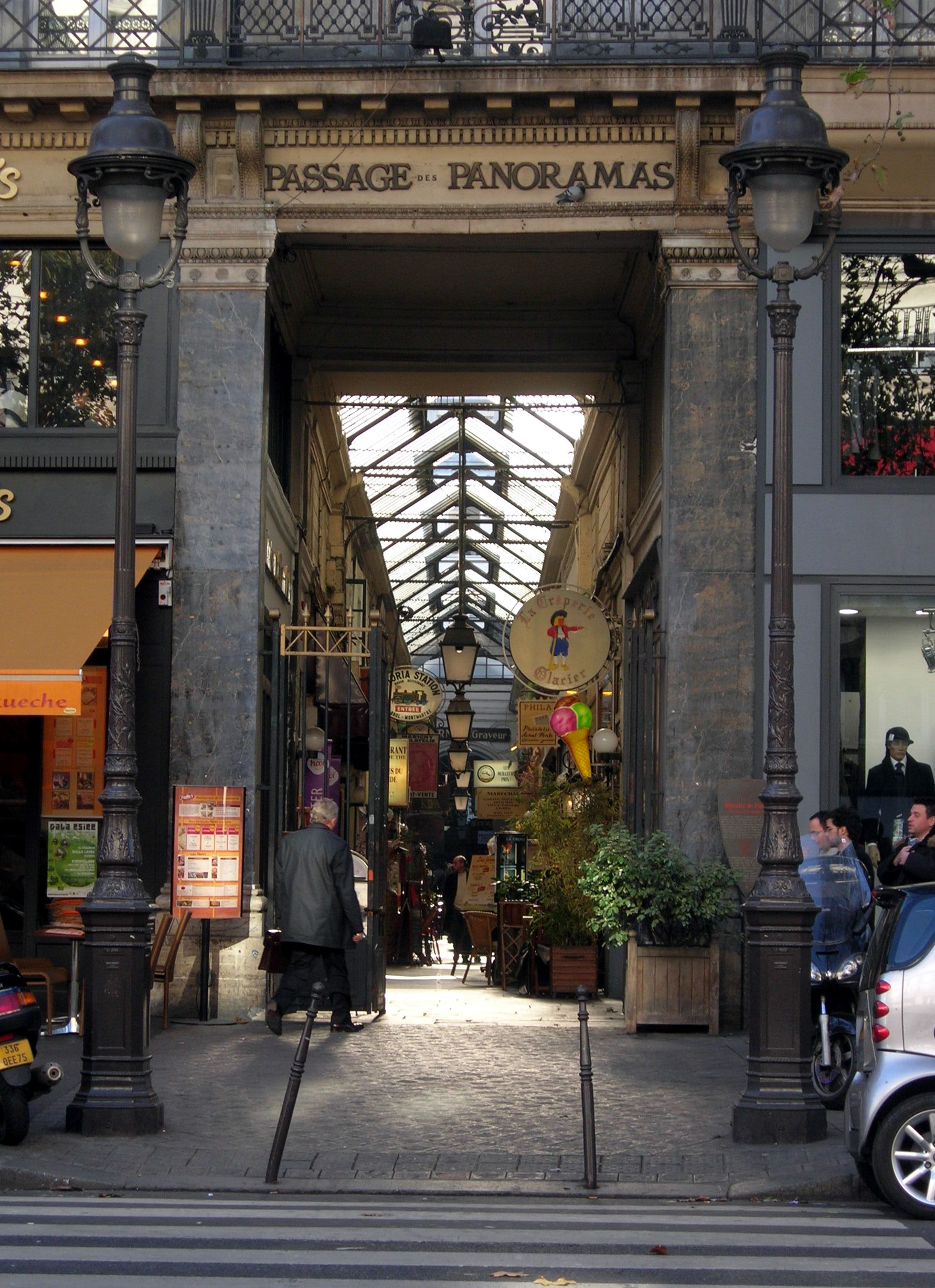Passage du Caire on:
[Wikipedia]
[Google]
[Amazon]
 The Passage des Panoramas is the oldest of the
The Passage des Panoramas is the oldest of the
Passage des Panoramas
{{coord, 48, 52, 16, N, 2, 20, 30, E, type:landmark_region:FR, display=title Streets in the 2nd arrondissement of Paris French stamp dealers Covered passages of Paris Shopping malls established in 1799 Buildings and structures in the 2nd arrondissement of Paris
covered passages of Paris The covered passages of Paris (french: Passages couverts de Paris) are an early form of shopping arcade built in Paris, France primarily during the first half of the 19th century. By the 1867 there were approximately 183 covered passages in Paris bu ...
, France
France (), officially the French Republic ( ), is a country primarily located in Western Europe. It also comprises of overseas regions and territories in the Americas and the Atlantic, Pacific and Indian Oceans. Its metropolitan area ...
located in the 2nd arrondissement between the Montmartre
Montmartre ( , ) is a large hill in Paris's northern 18th arrondissement. It is high and gives its name to the surrounding district, part of the Right Bank. The historic district established by the City of Paris in 1995 is bordered by Rue Ca ...
boulevard to the North and Saint-Marc street to the south. It is one of the earliest venues of the Parisian philatelic trade, and it was one of the first covered commercial passageways in Europe. Bazaars and souks in the Orient had roofed commercial passageways centuries earlier but the Passage de Panoramas innovated in having glazed roofing and, later on, in 1817, gas lights for illumination. It was an ancestor of the city gallerias of the 19th century and the covered suburban and city shopping malls
A shopping mall (or simply mall) is a North American term for a large indoor shopping center, usually anchored by department stores. The term "mall" originally meant a pedestrian promenade with shops along it (that is, the term was used to refe ...
of the 20th century.
The passage was opened in 1800 on the site of the town residence of the Marechal de Montmorency, Duke of Luxembourg, which had been built in 1704. The doorway of the modern building, of the house, which opened on rue Saint-Marc, facing the rue des Panoramas, was the gateway of the original mansion. Its name came from an attraction built on the site; two large rotundas where panoramic paintings of Paris, Toulon, Rome, Jerusalem, and other famous cities were displayed. They were a business venture of the American inventor Robert Fulton
Robert Fulton (November 14, 1765 – February 24, 1815) was an American engineer and inventor who is widely credited with developing the world's first commercially successful steamboat, the (also known as ''Clermont''). In 1807, that steamboa ...
, who had come to Paris to offer his latest inventions, the steamboat, submarine, and torpedo, to Napoleon
Napoleon Bonaparte ; it, Napoleone Bonaparte, ; co, Napulione Buonaparte. (born Napoleone Buonaparte; 15 August 1769 – 5 May 1821), later known by his regnal name Napoleon I, was a French military commander and political leader who ...
and the French Directory. While waiting for an answer, Fulton earned money from his exhibition. Napoleon, who had little interest in the navy, finally rejected Fulton's projects. Fulton left behind his Panoramas and went to London to offer his inventions to the British.
In 1800, Paris streets were narrow, dark, muddy and crowded, and very few had sidewalks or lighting; they were very unpleasant for shopping. The first indoor gallery, at the Palais Royal, had opened in 1786, followed by the passage Feydau in 1790–91, the Passage du Caire in 1799, and the Passage des Panoramas in 1800. The rotundas were destroyed in 1831. In the 1830s, the architect Jean-Louis Victor Grisart
Jean-Louis Victor Grisart (Paris, 28 June 1797 - Paris, 14 May 1877) was a French architect.
Biography
Jean-Louis Victor Grisart was a student of Jean-Jacques-Marie Huvé, Auguste Guenepin and Huyot. In 1823, he took second place in the Prix de ...
renovated the passage and created three additional galleries inside the block of houses: the Saint-Marc gallery parallel with the passage, the gallery of the Variétés which gives access to the entry of the artists of the Théâtre de Variétés, and the Feydeau galleries and Montmartre. Stern the famous engraver settled there in 1834, then merchants of postcard
A postcard or post card is a piece of thick paper or thin cardboard, typically rectangular, intended for writing and mailing without an envelope. Non-rectangular shapes may also be used but are rare. There are novelty exceptions, such as wood ...
s and postage stamp
A postage stamp is a small piece of paper issued by a post office, postal administration, or other authorized vendors to customers who pay postage (the cost involved in moving, insuring, or registering mail), who then affix the stamp to the f ...
s, and some restaurants moved in. The part of the passage close to the Montmartre boulevard is richly decorated, while the distant part is more modest. The passage, as it was in 1867, is described in chapter VII of Émile Zola
Émile Édouard Charles Antoine Zola (, also , ; 2 April 184029 September 1902) was a French novelist, journalist, playwright, the best-known practitioner of the literary school of naturalism, and an important contributor to the development of ...
's novel ''Nana
Nana, Nanna, Na Na or NANA may refer to:
People and fictional characters
* Nana (given name), including a list of people and characters with the given name
* Nana (surname), including a list of people and characters with the surname
* Nana ( ...
''.
References
Notes and Citations
Bibliography
* *External links
Passage des Panoramas
{{coord, 48, 52, 16, N, 2, 20, 30, E, type:landmark_region:FR, display=title Streets in the 2nd arrondissement of Paris French stamp dealers Covered passages of Paris Shopping malls established in 1799 Buildings and structures in the 2nd arrondissement of Paris